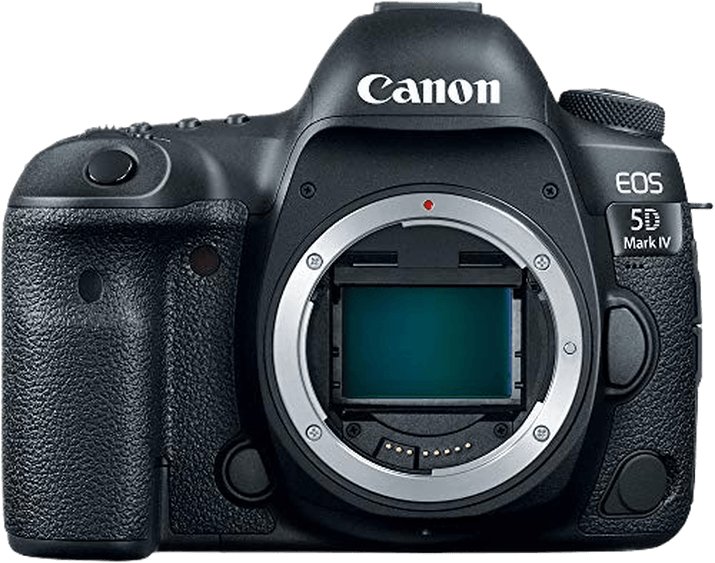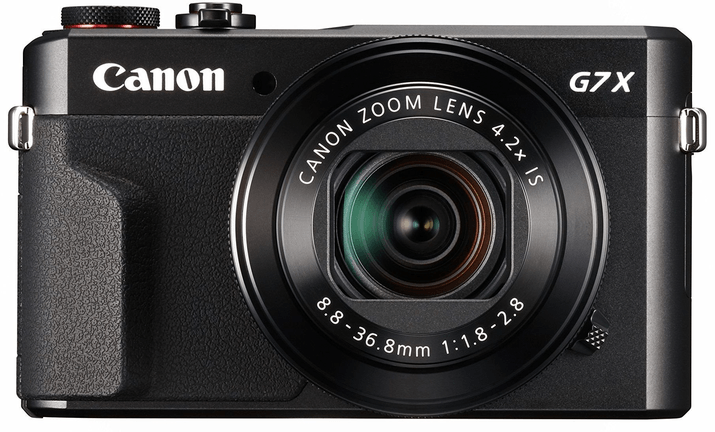Canon EOS 5D Mark IV vs PowerShot G7 X Mark II Comparison
Canon EOS 5D Mark IV

Canon PowerShot G7 X Mark II

The Canon EOS 5D Mark IV outperforms the Canon PowerShot G7 X Mark II with a score of 75/100 compared to 59/100. Both cameras were released in 2016, with the 5D Mark IV announced on 08/25 and the G7 X Mark II on 02/18. They share some common specifications, such as their release year and manufacturer.
The 5D Mark IV, a DSLR camera, boasts a higher score due to its superior performance and features. With a launch price of $3500, it measures 151 x 116 x 76mm and weighs 890g (1.96lbs). The higher price and larger size reflect its professional-grade quality.
On the other hand, the PowerShot G7 X Mark II is a compact camera with a more affordable launch price of $699. It measures 106 x 61 x 42mm and weighs only 319g (0.70lbs), making it a more portable and budget-friendly option.
When choosing between these two cameras, consider your photography needs and preferences. The Canon EOS 5D Mark IV offers advanced features and performance, while the Canon PowerShot G7 X Mark II provides affordability and portability.
Canon EOS 5D Mark IV vs PowerShot G7 X Mark II Overview and Optics
The Canon EOS 5D Mark IV emerges as the winner in the optics comparison with a score of 76/100, while the Canon PowerShot G7 X Mark II trails behind at 58/100. Both cameras share some common specifications, such as CMOS sensor type, absence of image stabilization, and a similar shooting speed, with the 5D Mark IV at 7 fps and the G7 X Mark II at 8 fps.
The EOS 5D Mark IV outshines the PowerShot G7 X Mark II in several aspects. It boasts a higher megapixel count of 30.4, compared to the G7 X Mark II’s 20 megapixels, allowing for more detailed and higher resolution images. The 5D Mark IV also features a full-frame sensor, which contributes to its impressive DXOMARK score of 91. Furthermore, the Canon EF lens mount on the 5D Mark IV permits users to interchange lenses, expanding the camera’s versatility and adaptability to various shooting scenarios.
On the other hand, the PowerShot G7 X Mark II has its merits as well. Its Digic 7 processor is an upgrade from the 5D Mark IV’s Digic 6+ processor, potentially providing faster performance and improved noise reduction. However, the G7 X Mark II’s smaller 1″ sensor size and fixed lens mount limit its capabilities, as reflected in its DXOMARK score of 79.
Taking all factors into consideration, the Canon EOS 5D Mark IV outperforms the Canon PowerShot G7 X Mark II in terms of optics. With its higher megapixel count, full-frame sensor, and interchangeable lens mount, the 5D Mark IV is the ideal choice for photographers seeking superior image quality and versatility. Although the G7 X Mark II benefits from an upgraded processor, its smaller sensor and fixed lens mount hinder it from matching the 5D Mark IV’s optical prowess.
Canon EOS 5D Mark IV vs PowerShot G7 X Mark II Video Performance
The Canon EOS 5D Mark IV outperforms the Canon PowerShot G7 X Mark II in video capabilities with a video score of 91 out of 100, a significant 21-point lead over the G7 X Mark II’s score of 70. Both cameras share some common features, such as built-in time-lapse functionality, which allows users to create stunning time-lapse videos without the need for additional equipment or software.
The 5D Mark IV’s superior video performance is evident in its higher maximum video resolution of 4K (4096 x 2160) compared to the G7 X Mark II’s Full HD (1920 x 1080) resolution. This difference allows the 5D Mark IV to capture more detail and produce sharper, more vibrant videos. Additionally, the 5D Mark IV boasts a higher maximum video frame rate of 120fps, double that of the G7 X Mark II’s 60fps. This higher frame rate enables smoother slow-motion video capture and gives users more creative control over their footage.
While the G7 X Mark II falls short in these areas, it still offers solid video capabilities for its class. Its Full HD resolution is suitable for most casual users and online content sharing. However, it does not match the professional-grade quality provided by the 5D Mark IV.
Considering these factors, the Canon EOS 5D Mark IV is the clear winner in video performance, offering superior resolution, detail, and frame rate options. The Canon PowerShot G7 X Mark II remains a decent option for casual users not requiring the advanced video capabilities of the 5D Mark IV.
Canon EOS 5D Mark IV vs PowerShot G7 X Mark II Features and Benefits
The Canon EOS 5D Mark IV outperforms the Canon PowerShot G7 X Mark II with a feature score of 74/100 compared to 70/100. Both cameras have touchscreen capabilities and WIFI connectivity, making them user-friendly and easily connected to other devices.
The 5D Mark IV excels with a larger screen size of 3.2 inches and a higher screen resolution of 1,620,000 dots, providing a clearer and more detailed display for users. Additionally, the 5D Mark IV includes GPS functionality, allowing photographers to geotag their images for improved organization and location-based data.
On the other hand, the G7 X Mark II offers some advantages as well. It includes a flip screen, which is helpful for shooting at various angles and for vlogging purposes. The G7 X Mark II also has Bluetooth connectivity, making it easier to connect with other devices and share images wirelessly.
Taking these factors into account, it is clear that the Canon EOS 5D Mark IV is the superior camera in terms of features, due to its larger screen, higher resolution, and GPS capabilities. However, the Canon PowerShot G7 X Mark II should not be overlooked, as its flip screen and Bluetooth connectivity make it a strong contender for those seeking a more versatile and easily connected camera.
Ultimately, the choice between these two cameras depends on the user’s priorities and intended use. The Canon EOS 5D Mark IV is the better option for those seeking high-quality display and GPS functionality, while the Canon PowerShot G7 X Mark II caters to users who value a flip screen and seamless wireless connectivity.
Canon EOS 5D Mark IV vs PowerShot G7 X Mark II Storage and Battery
The Canon EOS 5D Mark IV outperforms the Canon PowerShot G7 X Mark II in storage and battery, scoring 71/100 compared to the latter’s 29/100. Both cameras share compatibility with SD, SDHC, and SDXC memory cards (UHS-I compatible). However, the 5D Mark IV boasts two memory card slots and also accepts Compact Flash cards, offering greater flexibility and storage capacity.
Regarding battery life, the 5D Mark IV is superior with 900 shots per charge, using the LP-E6N battery type. In contrast, the G7 X Mark II only provides 265 shots with its NB-13L battery. The PowerShot G7 X Mark II does have one advantage: USB charging, which the 5D Mark IV lacks.
Taking these factors into account, the Canon EOS 5D Mark IV is the clear winner in storage and battery capabilities, offering more memory card slots and a significantly longer battery life. The Canon PowerShot G7 X Mark II’s USB charging feature is its only edge over the 5D Mark IV in this category.
Canon EOS 5D Mark IV vs PowerShot G7 X Mark II – Our Verdict
Are you still undecided about which camera is right for you? Have a look at these popular comparisons that feature the Canon EOS 5D Mark IV or the Canon PowerShot G7 X Mark II:

